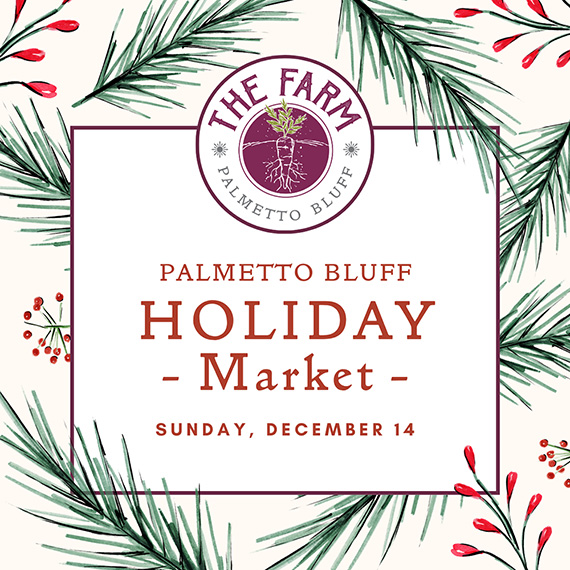Palmetto Bluff Real Estate Company Sales Office
Office Hours
Monday-Friday 9am - 5pm
Saturday 9am - 4pm
Sunday 12 - 4pm
Saturday 9am - 4pm
Sunday 12 - 4pm
There’s an appropriate sweetness to the humble origins of the s’more. While Frank Epperson and Ruth Graves Wakefield have been deified for birthing the Popsicle and the chocolate chip cookie, respectively, the name of the culinary genius who first sandwiched marshmallow and chocolate together between graham crackers has been lost to history like smoke drifting from a campfire.
The closest we have is a recipe by Loretta Scott Crew in a 1927 guide for Girl Scouts called Tramping and Trailing with the Girl Scouts. But even then, it was already considered a time-tested staple of campouts. It’s one of those creations that sprung up organically, its recipe passed from campfire to campfire as people came together in the shared bonds of nature.
Like its humble origins, the s’more exults in a sort of celebration of simplicity. Try new flavors, introduce gourmet ingredients, do what you want with it.
But you can’t beat the classics.
“The average recipe works just fine. We can’t change it up that much,” said David Sampson, executive pastry chef for Montage Palmetto Bluff. He and his team are tasked with stocking the resort’s iconic s’mores cart, a three-wheeled Dutch delivery bike converted into a cornucopia of sugary treats. From its crocks and coolers, you can craft your own spin on the s’more with marshmallows from mint to caramel and chocolate plaques in both milk and dark. “We’ll put out a few elevated ingredients, but we always have to keep the classic Jet-Puffed, Hershey’s, and Nabisco graham crackers. We do that for the nostalgia.”
While you won’t find them on the s’mores cart, the Montage house-made marshmallows are renowned. Specialty flavors from bourbon to peach can be found on the resort’s desserts, each meticulously crafted from sugar, gelatin, salt, and vanilla. Whipped to a sublime puffiness” (“It does get a little messy,” Sampson said.), each marshmallow is dusted with powdered sugar and cut by hand. However, they’ve found that what works on a plate doesn’t necessarily work over a fire. Bourbon marshmallows tend to be a bit more flammable than their nonalcoholic counterparts, after all.“We have to watch out. Some things caramelize well, and some things do not,” Sampson said.
And caramelization is key. The trick to a perfect marshmallow, experts will tell you, is to find that sweet spot in a fi re’s life span when the smoke has slowed to a wisp and the logs have charred down to burning embers an electric shade of orange. Even the original Girl Scout recipe informs you to toast your marshmallows “over the coals to a crisp gooey state.” From there, it’s about patience.
“I like mine a nice golden brown. It takes time,” Sampson said.
If you’re not the patient type, there is another way. Proving that even the unchanging s’more isn’t immune to innovation, I’ve found that you can get a quicker melt using convection rather than the conventional heat found at the base of the fire. Look toward the top of the logs for a flame that’s swirling rapidly, a good sign of rising heat stoking flames at the top of the woodpile, and get your marshmallow a good 2 to 3 inches above that highest lick of the flame. When done right, the marshmallow won’t toast, but it will cling easier to the stick since the inside doesn’t entirely melt. The outside, however, will render to an irresistible creamy goo.
Maybe this new method will catch on, and maybe it won’t. I’m betting it won’t. After all, the recipe has remained unchanged for nearly a century. Elevate its ingredients, introduce new methods, and all you’re doing is creating minor variations. The s’more itself remains unchanged and universal, like the sweet childhood memories it evokes.
Photography by: Michael Hrizuk

The Ultimate Choice: Building vs Buying a Home in Palmetto Bluff For those searching for Palmetto Bluff homes for sale, this common question often arises: Should you choose an existing residence, or embrace the opportunity to build your own? While a complet...

A Complete Guide to South Carolina Winter at Palmetto Bluff South Carolina's winter is unlike any other on the East Coast. While many travelers search for “South Carolina winter” expecting cooler temperatures and limited outdoor options, the Lowcountry revea...

River Road: Where Lowcountry Beauty Meets Elevated Everyday Living Tucked gracefully between Wilson Village and Moreland Village, River Road is one of Palmetto Bluff’s most immersive communities. It's where the pace of life seems to soften, classic Southern ...

Sunday, December 14 | 9am to 1pmVillage GreenThe season’s most festive farmers market, the Holiday Farmers Market, comes to Wilson Village on Sunday, December 14, from 9am to 1pm. All are welcome to visit and experience the magic of holidays at the Bluff. The ...

Tucked amid whispering pines and overlooking a tranquil water trail, 11 Lyonia Street is where Lowcountry charm meets modern artistry. The newly built residence redefines Southern living with a balance of craftsmanship and calm. This is a home that feels both ...

The holiday season in the Lowcountry brings crisp air, oaks draped in twinkling lights, and laughter drifting from homes where families and friends gather once again. At Palmetto Bluff, the holidays are more than just a season; they’re a feeling of togethernes...

https://vimeo.com/1071784239?share=copy&fl=sv&fe=ci We are excited to unveil the official brand identity for Palmetto Bluff’s newest chapter in golf, Anson Point. Designed by golf icons Bill Coore and Ben Crenshaw and set within more than 500 acre...

Must-Do 2025 Holiday Events in the Lowcountry There’s no better way to embrace the magic of the holidays than spending them in the heart of the Lowcountry. With its sparkling waterways, moss-draped oaks, and warm coastal charm, Palmetto Bluff transforms into ...

Rebecca’s Journey to Palmetto Bluff For Rebecca McCorkendale, life on the water isn’t just a career—it’s a calling that runs through generations. Growing up on Hog Island, nestled between Hilton Head and Bluffton, Rebecca was raised with salt air in her lungs...

Headwaters Community in Palmetto Bluff Tucked deep within Palmetto Bluff’s untouched maritime forest, Headwaters stands apart as the community’s most private and pristine enclave. With just ten family compounds spread across more than 600 acres of scenic mars...
Learn about the Palmetto Bluff Conservancy and how we keep the vision of our land in place.
On land or water, there is an ever-evolving variety of activities.
We do not attempt to independently verify the currency, completeness, accuracy or authenticity of the data contained herein. All area measurements and calculations are approximate and should be independently verified. Data may be subject to transcription and transmission errors. Accordingly, the data is provided on an “as is” “as available” basis only and may not reflect all real estate activity in the market”. © [2023] REsides, Inc. All rights reserved. Certain information contained herein is derived from information, which is the licensed property of, and copyrighted by, REsides, Inc.